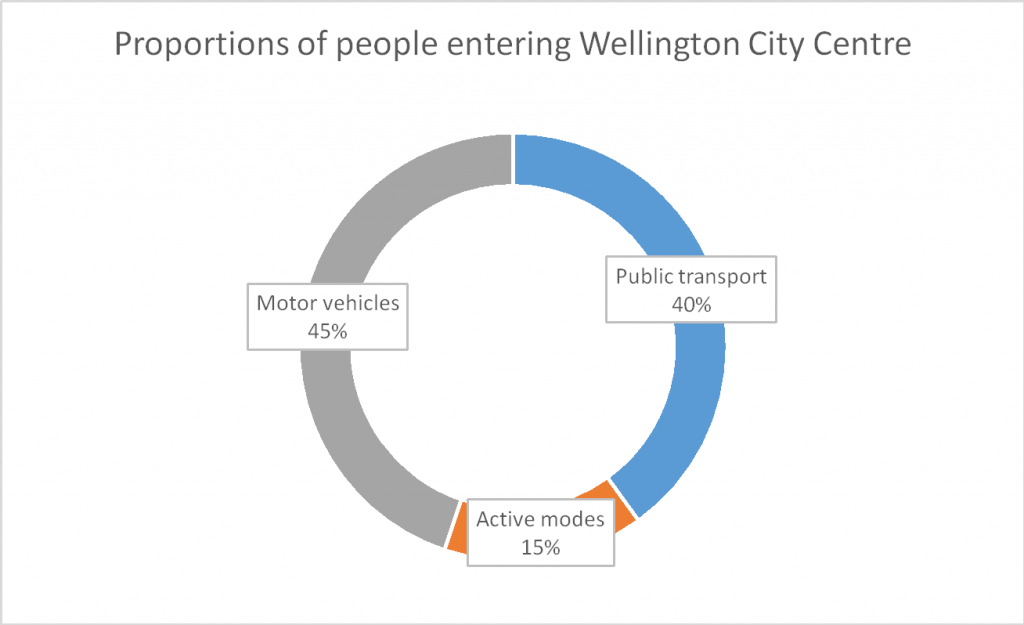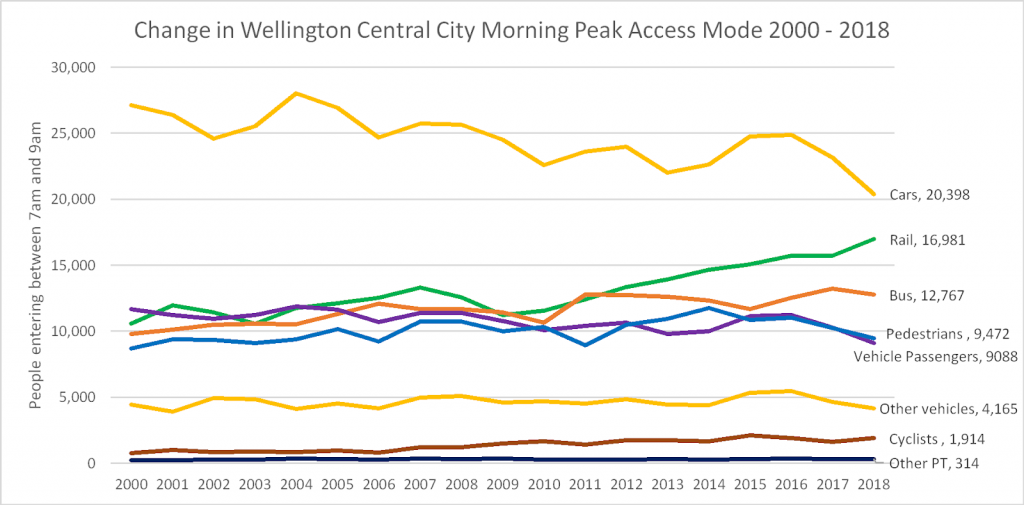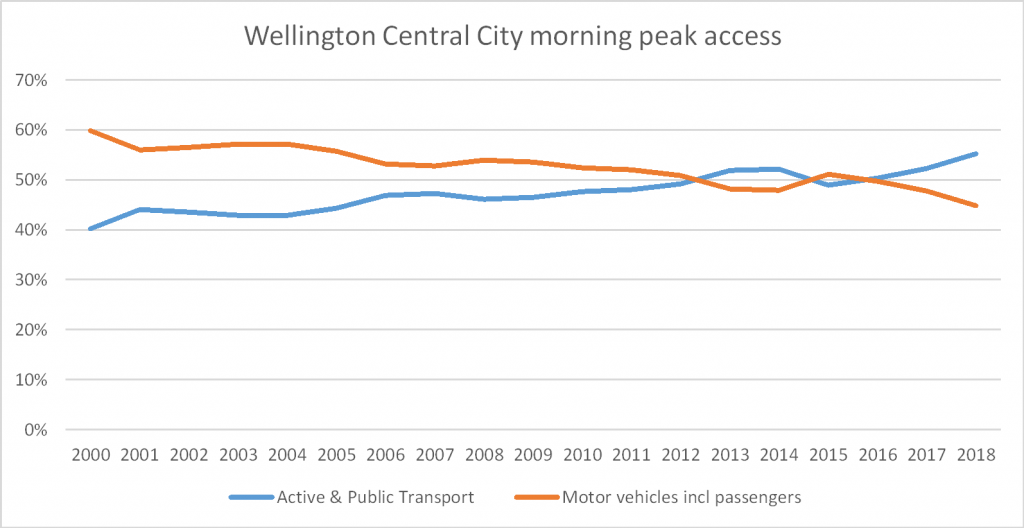Which Way to Welly? CBD Transport Data Analysis!
Thanks to some great data collection and cooperation between the city and regional councils, Wellington has been tracking how people get into our city since the year 2000. We have a look at how things are placed, and how our city is changing. Get ready for the stats!
Good public transport is important to how Wellington functions. But just how important is it?
We recently came across the ‘Wellington City CBD Corridor Survey’, which has been conducted annually by the GWRC and WCC since 2000.
This survey counts everyone crossing into Wellington City between 7am and 9am, with the boundary as defined by the red line below. Average vehicle occupancy has been estimated, and this is multiplied against measured vehicle volumes to obtain a total vehicle person trips number. Bus and rail passengers and vehicles are counted on specific days, while active modes are counted for a week and the numbers averaged.

CBD
The long-standing nature of the study gives us some great insights into how travel behaviour has changed over time.
Firstly let’s have a look at the 2018 numbers. Overall 75,100 people were recorded as arriving in Wellington City Centre during the two-hour morning peak.

Car drivers are the largest single access mode, with 20,000 cars entering Wellington City Centre in the morning peak. However, they only account for 27% of people coming into Wellington. Overall vehicles bring in 33,000 people, or 45% of the total. Trains bring in nearly 17,000 people (23%), and buses nearly 13,000 (17%).
These numbers are summarised below.

Now let’s have a look at how these trends have changed over times.
This is what the changes by mode look like. Interestingly many modes have stayed relatively constant. What stands out is the steady decrease in private car trips and major growth in rail patronage in the last decade. Car trips have dropped from 27,000 to 20,000 since the year 2000. Meanwhile rail has grown from 11,237 in 2009 to 16,981 in 2018, an impressive 51% increase. All this on the back of some fairly basic upgrades and minimal service improvements (insert snide, sarcastic comment yourselves, dear reader).

The table below shows the summary of changes since the year 2000. Private vehicle access has dropped from 60% of total trips to 45%, and the combination of public transport and active modes has risen from 40% to 55%.

This is great news. It shows things in Wellington have been heading in the right direction, and proves Wellingtonians can shift the way they move around the city. As mentioned in an earlier post, this is despite fairly low levels of investment focused on catch-up maintenance and minor service upgrades. However, almost all of this change has been led by large growth in rail patronage. Bus patronage has remained fairly flat. This bodes well for further investment, shifting the balance of movement in the city towards public and active transport modes.
What’s changed for your over the decade? Have you shifted from car to bus or train? Why?
Let us know in the comments, on Twitter, on Instagram or via email.
Read more about the survey here: http://www.gw.govt.nz/assets/Transport/Regional-transport/Regional-Transport-Analysis/Cordon-data-report-2018.pdf
Picture Credits
Cover image CC by Stuff
Very positive indicators for change
Thank you for the very good article. We are heading in the right direction – and you could have taken that trend back further – to 1991/2 when PT use stopped declining and started increasing – a lot of that was bus. Likewise walking also increasing – put part of that down to densification rather than sprawl.
One thing that make this trend even more positive is that it excludes the people who live (and generally work) inside the cordon – and that growth has been spectacular. From the last census about 84% of those people walk to work.
The other is the increase in cycling – the numbers are small relative to car/PT/walking – but the proportionate growth has been significant.
Finally it isn’t fair to say that rail has had only basic upgrades and minimal service improvements – though you do say that there has been catch up on deferred maintenance ! It is just that the deferral was something like 60 years. Clearly there is a better quality of service, plus some improvements in scheduling – express services etc, and a more reliable network.
Anyway – thank you again for an excellent article.
Kind regards
Andy Foster
City Councillor